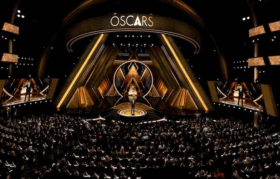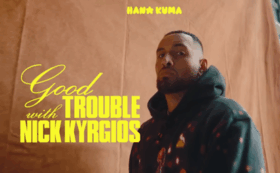
By Hope Horner, founder & CEO of Lemonlight
 Lights, camera…glitch?
Lights, camera…glitch?
Everywhere you turn, AI video is being pitched as the future. The problem? The future isn’t here yet.
For all the dazzling demos and breathless headlines, the reality is far less cinematic: the tools are clunky, the outputs uneven, and very few brands are actually using them at scale. Yes, AI will transform how we create video. But right now, it’s more awkward teen than fully formed adult—full of potential, still tripping over its own feet. The opportunity isn’t to blindly buy into the hype, but to get clear-eyed about what’s real today, what’s not, and how to make it work in the meantime.
Where AI Video Actually Stands Today
For now, AI video isn’t the revolution marketers were promised—it’s the awkward middle stage. For decades, video was entirely human-powered. Creativity, logistics, and execution were all handled by people—powerful, yes, but expensive and painfully inefficient. While we’ve moved past the “all human” era, we’re nowhere near an “all AI” future either. The reality is Human + AI Tools: people steering, machines assisting.
Inarguably, models like Veo 3 can spit out eye-catching clips, but can they deliver a full video with consistency, continuity, and creative control? Not yet. Outputs break down when you need characters to behave the same way across scenes, brand elements to stay locked, or a storyline to hold together. What you get is usually a great snippet that unravels the moment you try to scale it into a complete piece of content.
Even when the quality looks strong, making edits is also challenging. With human editors, you can tweak a shot, adjust pacing, or update a line quickly. With AI-generated video, a small change often means regenerating the entire piece, which is an unpredictable, time-consuming process that can actually take longer than traditional editing. For brands that need multiple rounds of review and stakeholder sign-off, that lack of precision control makes AI video more frustrating than freeing.
That’s why most brands aren’t ready to hand over the keys. The tools are impressive, but the day-to-day realities aren’t yet built for how marketers actually work.
Let’s talk about what’s possible.
What AI Video Is Already Great At
Before we talk about where AI video is headed, it’s worth recognizing what it already does well. These aren’t the glamorous headline features, but they’re the places AI is saving marketers real time and money right now.
● Resizing content: Turning one master video into dozens of platform-specific versions used to take hours. AI can do it in minutes.
● Auto-captioning: Once a tedious, error-prone task, captions are now generated instantly, with surprising accuracy.
● Translating: AI makes it possible to reach global audiences faster by creating localized versions of content at scale.
● Animatics and storyboards: Early drafts and visualizations can be spun up quickly, helping teams see concepts before investing in a full shoot.
● Rough cuts and cut downs: AI can stitch together first passes or shorter versions of longer videos, giving editors a solid starting point.
These are practical, tactical wins. They don’t replace human creativity, but they remove the repetitive work that slows it down. For brands, there’s a lot of value already available.
What It Can’t Do (Yet)
Where AI video still falls short is in creating a fully finished piece from scratch. If you want a complete, polished video that holds together from start to finish, the best approach isn’t to hit “generate” and hope for the best. It’s to work with a creative professional who knows how to bridge the gap.
That means someone who can take your idea, craft the right prompts to generate usable clips, and then stitch those clips together in third-party software like Adobe Premiere. The human brings the vision, the taste, and the continuity—AI supplies raw material that speeds up the process. Done well, this hybrid approach delivers content that feels polished and intentional, not like a highlight reel of random outputs.
Until the technology matures, AI works best as a tool in the hands of professionals, not a replacement for them.
The Smarter Path Forward
For now, the smartest way to think about AI video is balance: let it handle the repetitive work it’s great at—resizing, captioning, translating, rough cuts—and pair it with human creativity where quality, originality, and control matter most.
When you need a full, polished piece, the most effective approach is still working with professionals who can guide the process: shaping ideas, generating prompts, and editing everything together with the precision today’s tools can’t match. The tech is powerful, but it’s not magic, and in the hands of creative professionals, it becomes far more than a gimmick. It becomes an accelerator.







